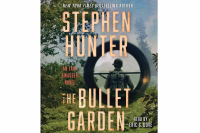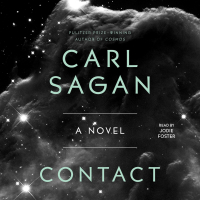Exhibit aimed a piquing interest in Cherokee history
 A new traveling exhibit is using technology to teach people about traditional Cherokee culture.
A new traveling exhibit is using technology to teach people about traditional Cherokee culture.
1882 Cowee Tunnel disaster comes into 21st century spotlight
 Charged with stealing, 15-year-old Charles Eason was sentenced to work on a prison chain gang.
Charged with stealing, 15-year-old Charles Eason was sentenced to work on a prison chain gang.
It was 1882, and the teenager from Martin County soon found himself side-by-side with other convicts, many two and three times his age. Mostly from the eastern part of the state, the gang was sent to construct the railroad lines in Western North Carolina.
History of Cherokee War is top notch
 We Americans sometimes forget how new we are to the history of the world.
We Americans sometimes forget how new we are to the history of the world.
Here in Western North Carolina, for example, we live like other Americans. We drive cars on expressways, live in towns and cities, buy or build homes and apartments equipped with electricity and running water, erect schools, churches, and fast-food restaurants, build shopping malls, buy meat, vegetables and milk from large grocery stores, vacation at the coast or overseas, gather local information from papers like The Smoky Mountain News, and commune with the world via the internet and television.
Gripped by history: A one-woman mission to trace Waynesville’s early roots takes on a life of its own
 Lately, it seems Ann Melton was born in the wrong century.
Lately, it seems Ann Melton was born in the wrong century.
During the past two years, Melton has spent more time living in the late 1800s — the days when boarding houses and hitching posts lined Waynesville’s Main Street, when general stores still had butcher counters and bartering was a way of life — than the comparatively humdrum trappings of the 21st century.
Descendents rekindle Civil War tale of sheriff shot 150 years ago
 The death of Haywood County Sheriff John Phillip Noland — a murder story set against the backdrop of the American Civil War — sounds as if it belongs in the pages of Charles Frazier’s Cold Mountain.
The death of Haywood County Sheriff John Phillip Noland — a murder story set against the backdrop of the American Civil War — sounds as if it belongs in the pages of Charles Frazier’s Cold Mountain.
Uncovering the past before it’s too late: Old Smokies’ homesites slowly succumbing to time and elements
 As Don Casada veered off-trail and began bushwhacking his way over fallen logs and through overgrown shrubs along the shore of Lake Fontana, he barely glanced at the trusty GPS unit in his hand.
As Don Casada veered off-trail and began bushwhacking his way over fallen logs and through overgrown shrubs along the shore of Lake Fontana, he barely glanced at the trusty GPS unit in his hand.
He’d been this way before, many times, and knew just where he was going. Casada finally stopped at a clearing marked by a looming stone chimney, all that is left of a cabin that early Appalachian settlers had once called home.
The specter of specters awaits on Bryson City’s Ghost Walk
 By Peggy Manning • Correspondent
By Peggy Manning • Correspondent
Tim Hall relishes in the history and folklore of the mountains but also knows when a little embellishing is in order — especially when it comes to ghost stories.
Swain history, veterans will share spotlight in wall project
 Swain County is permanently etching its history in stone.
Swain County is permanently etching its history in stone.
In the next couple of months, the first of about 60 black marble panels will be installed along the wall outside the county government building and courthouse in downtown Bryson City. The panels will detail important points in Swain County’s history and also list the names of its veterans from various wars and conflicts.
Voices of the Smokies to go live in oral project
Recordings made some seven decades ago of nearly 60 men and women who lived in what became the Great Smoky Mountains National Park soon will be made publicly available online.
In 1939, a young graduate student by the name of Joseph Sargent Hall traveled through the region’s coves and hollows with an audio recorder powered off his pick-up truck battery, capturing tales of bear hunts, lessons on herbal remedies and authentic mountain tunes. He spent eight months recording the experiences of older residents and the music of young aspiring musicians. Of the 60 interviews, 17 were from Swain County and 16 were from Haywood County.
One of the mountaineers recorded by Hall was the famous Steve Woody of Cataloochee Valley, who was 86 at the time.
“That’s not me; that’s my grandfather,” Steve Woody the younger said with a laugh. “I can remember him.”
Woody owns a tape rendition of the 1939 recording Hall made of his grandfather. It is a story about a bear hunt, Woody said, and there’s also a photograph in the family album of the actual interview taking place, too.
Woody thinks it’s terrific that the old recordings soon will be made easily available.
“It’s a good thing,” he said. “I think people need to know the history of these mountains.”
When the Great Smoky Mountains National Park was created, hundreds of people living in remote Appalachian settlements were forced to move. Hall’s recordings were made just as this was happening, capturing a moment in time and way of life that was coming to an end. Woody’s grandfather was the last person to move out of Cataloochee Valley after the park was created.
The City University of New York will host the non-commercial website where the recordings will be made publicly accessible. A release date hasn’t been set — the project’s members are trying to ensure that living descendants of those recorded are given notice first that the recordings are being made public.
Michael Montgomery, a professor of English and linguistics at the University of South Carolina and a member of the project team, said that the digitized recordings are being made from tape recordings that were, in turn, made in the 1980s from the original recordings.
“They are actually quite clear for recordings made more than 70 years ago,” Montgomery said, adding that the original discs are held in safekeeping in the Library of Congress.
Copies of the recordings are currently available for people to listen to if, that is, they are willing to drive several hours into Tennessee to the Archives of Appalachia at East Tennessee State University.
A chronicler of the people
Using Civilian Conservation Corps camps for home base, Hall ventured throughout the area to record. For this work, Hall used two recorders, one that produced aluminum discs and was operated by cables hooked to a pick-up truck battery and another that made acetate discs and ran on a portable battery pack.
Montgomery said that Hall became close friends with many of the men working in the CCC camps and returned to visit them for many years after the first recordings were made. Hall died in 1992.
Luke Hyde of Bryson City, who had family members who once lived where the park was subsequently created, said he believes it will be helpful to families such as his and for park history buffs in general to have the recordings easily available via a website. In addition to the recordings, searchable texts also will be online.
“I like the general concept,” Hyde said, adding that he is well familiar with the important work done by Hall to record the people of the Smokies.
“He was fascinated by a lot of things, and he listened to people,” Hyde said. “He was one of the chroniclers of the mountain people.”
Montgomery said Hall’s interest in making this set of recordings was to record dialect. That meant he didn’t care so much what people said as long as they said something — so what’s on the recordings are such things as “women talking about herbal remedies and fellows talking about bear hunting,” Montgomery said.
Hall himself wrote about his work that, “the topics of the recordings were anything the informant wished to talk about. Men talked about their farm, their crops, their cattle, and hunting. Women liked to tell recipes or talk about their interest in weaving and quilting and the like.”
Hall also recorded the music of the day. Young musicians played country and swing and other tunes they were hearing on the radio.
“Joseph Hall recorded anything people wanted to play,” Montgomery said.
In 2010, the Great Smoky Mountains Association released “Old Time Smoky Mountain Music,” a CD with 34 of the musical selections recorded by Hall.
Montgomery said that one of Hall’s most admirable traits was his determination to stay in the background and not overshadow the men and women that he was recording.
“He thought that was the best way to counter stereotypes. He wanted mountain people to use their own voices,” Montgomery said. “His approach really was to avoid general statements and to let mountain people speak for themselves.”
Not everyone is certain the release of the recordings is a good idea.
Harley Caldwell, 75, was the last person born in Cataloochee Valley before the park was formed. He’s concerned about the privacy rights of the people who were recorded, about whether they realized that one day their stories and tales would be released publicly.
Caldwell, in fact, is involved in a similar project to Montgomery’s. The Cataloochee Oral History Project teamed with Western Carolina University to record and videotape 33 living descendents from Cataloochee. A DVD is set for release in early 2013.
“It’s a bigger project than I wanted to tackle, but I tackled it anyway,” Caldwell said.
WCU provided the equipment and is editing the interviews and preparing the DVD. Caldwell facilitated the project by rounding up the Cataloochee descendents. Caldwell said, perhaps echoing what Hall also found, that he was most surprised by “the willingness of people to talk about their past.”
One of those men interviewed was age 99, Caldwell said, adding that the man remembered historic events as if they’d occurred yesterday.
“It was the most interesting thing I’ve ever done in my life, and I’ve done a lot of exciting things,” Caldwell said of the oral history project.
One thing Caldwell and his team were careful to do was obtain signed releases from those interviewed — and he worries that, in contrast, Hall’s subjects were never cautioned that one day their voices would be heard again.
Speakers recorded by Joseph S. Hall in 1939:
Haywood County:
• Mack Caldwell, 53, Mount Sterling.
• Mack Hannah, 81, Little Cataloochee.
• Mrs. Mack (Fannie) Hannah, 73, Little Cataloochee.
• Millard Hill, 27, Saunook.
• Mark Mehaffey, Maggie.
• Bill Moore, 21, Saunook.
• Howard Moore, Saunook.
• Manuel Moore, Saunook.
• Mrs. George Palmer, 65, Cataloochee.
• Will Palmer, Cataloochee.
• Mrs. Will Palmer, 69, Cataloochee.
• Herbert Stephenson, 25, Saunook.
• Eugene Sutton, 43, Cataloochee Creek.
• Jake Sutton, 63, Cataloochee.
• Jim Sutton, 70, Cataloochee.
• Steve Woody, 86, Cataloochee.
Swain County:
• Mrs. Bill Brown, Towstring Creek.
• Dan Cable, 73, Cable Branch, Proctor.
• Aden Carver, 91, Bradley Fork, Smokemont.
• Mark Cathey, 54, Deep Creek.
• D. F. Conner, 84, Oconaluftee.
• Bert Crisp, 47, Towstring Creek.
• Zeb Crisp, 64, Hazel Creek.
• Grover Gilley, Bryson City.
• Gladys Hoyle.
• Frank Lambert, 40, Towstring Creek, Smokemont.
• Grady Mathis, 50, Smokemont.
• Al Morris, 67, Kirklands Creek.
• Rebecca Queen, 70, Cherokee.
• Docia Styles, 66, Indian Creek.
• Zilphie Sutton, 70, Chestnut Branch.
• Jake Welch, 79, Ryan Branch, Hazel Creek.
• Fate Wiggins, 79, Deep Creek.
• Mary Wiggins, Deep Creek.
WCU’s Hunter Library releases online oral history collection
A series of oral interviews with the people of Western North Carolina are now available online through Western Carolina University’s Hunter Library.
“Stories of Mountain Folk” is the first all-sound collection released by Hunter Library. The collection’s interviews cover traditions, events and life stories of regional individuals including gardeners, herbalists, farmers, musicians, artists and writers. The archive is searchable by name, place and topic.
The interviews were produced by Catch the Spirit of Appalachia, a nonprofit organization founded in 1989 by the sisters Amy Ammons Garza, an Appalachian storyteller, and Doreyl Ammons Cain, a visual artist, with the mission of preserving local memory. In September 2008, Catch the Spirit of Appalachia began “Stories of Mountain Folk” as a half-hour radio show.
Catch the Spirit of Appalachia teamed up with Hunter Library to preserve the recorded material. The online archive holds approximately half of the roughly 200 existing radio programs, with Hunter Library staff continuing to upload the backlog.
“The university has provided expertise to preserve the content, which is very different from academic creation of new intellectual content. This content was created in the community, and the library is providing a service in preserving the material,” said Anna Fariello, an associate professor in Hunter Library’s Digital Programs.
For her part, Garza is thrilled with the arrangement.
“I cannot tell you how my heart leapt when this agreement was signed,” she said. “Saving the voices of the mountain folk has been a longtime goal of Catch the Spirit of Appalachia, for listening to the mountain folk as they tell their own personal stories evokes evidence of an unmistakable wisdom and sense of place.”
The collection can be found at www.wcu.edu/library/digitalcollections/storiesofmountainfolk.
Poignant, touching, revealing: WCU collection of Civil War letters helps mark anniversary of war’s start
Next to Hunter Library at Western Carolina University is a Baptist church with a 190-year-old graveyard. George Frizzell, head of the library’s special collections, helped survey that graveyard 17 years ago.
So when Frizzell spotted a postscript to a letter in WCU’s collection of some 200 Civil War letters written by Western North Carolina soldiers and their families, the archivist described feeling an eerie chill. The names seemed familiar.
“We saw the one with the postscripts about the headstones, I thought, ‘could it possibly be?’” he said. “I walked over and found the grave, and next to it was the smaller stone to ‘Little Charley.”
In that Cullowhee Baptist Church graveyard are two Civil War-era tombstones, side by side; a large one for a Dr. Edmonston, the other one for Charley.
The story of the tombstones is told in a letter written by Maggie Edmonston, Dr. Edmonston’s wife and Charley’s mother. And it seems as relevant now, as the nation observes the 150th anniversary of the start of the Civil War, as when Maggie Edmonston wrote the words “Dear Brothers” in a poignant plea for help to her brothers-in-law. The letter is dated July 14, 1864.
“Will you please go to the marble yard in Petersburg or any yard you may see and select some nice tombstones for Dr. Edmonston’s grave?” Maggie Edmonston wrote from Webster. “Have sent off three times but failed to get any. I know you will take more interest than any buddy else please let me know if you get any so I can send you the inscription if you can get some nice ones let me know I can have them shipped to Walhalla. I want two set one small set for my baby that is all I can do for him and I never will be satisfied until I get that done.”
Dr. Edmonston was a native of Haywood County who is believed to have died here in the mountains from milk sickness after returning, weakened by illness, from the war. He was practicing medicine in Webster when he apparently drank milk poisoned with tremetol, which happens when cows graze on white snakeroot. The reason the couple’s baby died isn’t recorded, though WNC’s old cemeteries provide ample evidence of many babies in the early to mid-19th century also having died from milk sickness.
The 200 or so letters, and WCU hopes to receive even more in the years to come through donations from local families, provide an invaluable look at this region during the mid-19th century. They are being digitized and made available online. The letters demonstrate that though times have changed, human emotions have not. And although most of the Civil War battles were fought on lands far from these mountains, it touched people here as dreadfully as anywhere in the nation. As the war dragged on, it claimed more and more WNC lives, and destroyed more and more WNC families.
George Huntley, a Rutherford County native, wrote his sister Tincy on June 29, 1863, while marching into Pennsylvania as a member of the North Carolina 34th Infantry Regiment: “We are stoped to day in a Beautiful Oke grove I Cant tell whare old Lee Will Carry us tow this is One of the finest Countrys that I Ever saw.”
Three days later Huntley, a school teacher before the war, died from a wound received in the Battle of Gettysburg.
It is those types of details that bring the letters to life for Frizzell.
“The letters summon up the emotional experiences, the concerns and the hopes,” he said. “They speak so much to place, and being here.”
There are letters from Frizzell’s ancestor, M.W. Parris, telling his wife which men had been wounded and killed during the North Carolina 25th Infantry Regiment’s latest battle. The toll included a dozen or so men from Jackson County.
“I am sorry to tel that Som of our brave boys has got kild and Severl wounded in the great battle at richmond which Commenct last wensday,” Parris wrote on July 3, 1862.
Among them: Capt. Coalman’s head was shot off by a cannonball, John B. Queen fell dead as the fight started, Joseph Moody had his fingers shot off, William Cogdal (Cogdill) was wounded in the neck, Leander Hall in the leg, Harris Hooper was struck through the thigh or leg, Major Frances was badly wounded in the shoulder, W. William Beard badly wounded by a shot through his hips.
Parris adds that he believes they’ve won the battle, but describes the victory as “dearly bought” indeed.
Frizzell said Parris clearly penned the letter about the dead and wounded to the community as much as to his wife, Jane.
“These are folks they knew, and he’s trying to let all the wives know — this is how important information was shared,” Frizzell said.













